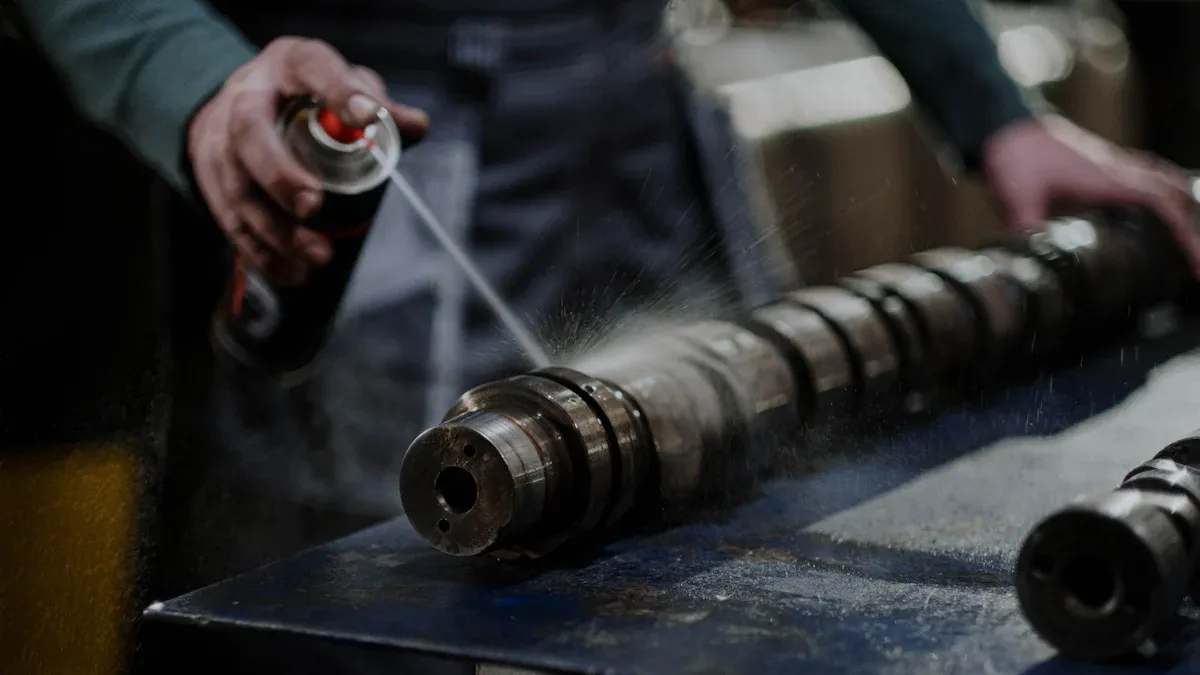
The global fire hydrant market analysis indicates that it is on a growth trajectory, projected to expand from $3.0 billion in 2024 to $3.6 billion by 2030. This upward trend reflects advancements in smart hydrants, which integrate IoT for enhanced functionality. For OEM partners, these innovations present opportunities to modernize infrastructure and develop durable, efficient designs tailored to urban needs. Sustainability also plays a pivotal role, encouraging eco-friendly practices. By aligning with these trends, OEMs can drive innovation while meeting regulatory demands and addressing the evolving needs of urban planning.
Key Takeaways
- The global fire hydrant market will grow from $3.0 billion in 2024 to $3.6 billion by 2030. This growth is due to more cities and smart technology.
- OEM partners can improve by making smart hydrants. These hydrants use IoT to check problems and fix them early.
- Fast-growing areas in Asia-Pacific and Africa offer big chances for fire hydrant makers because cities are growing quickly.
- Using eco-friendly materials and designs is important. It helps meet rules and attracts buyers who care about the environment.
- Working with local governments through partnerships can get long-term deals. This also helps make fire safety better in communities.
Fire Hydrant Market Analysis

Market Size and Growth Projections
Global valuation and CAGR for 2025
The fire hydrant market is projected to reach a valuation of $7.32 billion in 2025, with a compound annual growth rate (CAGR) of 3.6% from 2025 to 2034. This steady growth reflects the increasing demand for reliable fire safety infrastructure across urban and industrial landscapes.
| Market Size 2025 | CAGR (2025-2034) |
|---|---|
| $7.32 Billion | 3.6% |
Regional contributions to market growth
Regional dynamics play a significant role in shaping the fire hydrant market. North America and Europe continue to lead due to stringent fire safety regulations and advanced infrastructure. Meanwhile, the Asia-Pacific region is emerging as a key growth driver, fueled by rapid urbanization and industrial expansion. Africa also presents untapped potential, with governments prioritizing fire safety in developing urban centers.
Key Drivers and Challenges
Urbanization and infrastructure expansion
Urbanization remains a critical driver of the fire hydrant market. The rise in commercial and industrial buildings has increased the demand for fire hydrant systems. Additionally, new infrastructure projects often include mandatory fire safety installations, further boosting market growth.
Regulatory and safety compliance
Strict regulations mandating fire protection systems in new constructions significantly impact the market. Governments worldwide are enforcing compliance with safety standards, ensuring that fire hydrants remain an essential component of urban planning.
Supply chain and cost challenges
Despite its growth, the fire hydrant market faces notable challenges. High installation and maintenance costs can deter adoption, with new hydrants costing between $3,000 and $7,000 and annual maintenance ranging from $5 to $25 per unit. Aging infrastructure and competition from alternative firefighting technologies also pose hurdles. Environmental concerns, such as water conservation, add another layer of complexity for manufacturers.
Emerging Trends in the Fire Hydrant Market

Technological Innovations
Smart hydrants and IoT integration
Smart hydrants are revolutionizing the fire hydrant market. By leveraging IoT technology, these hydrants enable real-time data collection and transmission. Sensors embedded in smart hydrants monitor critical parameters such as water pressure and temperature. This connectivity ensures emergency services receive instant alerts about leaks or supply disruptions, improving response times and operational efficiency. Additionally, smart hydrants optimize water flow management and streamline maintenance tracking, making them indispensable for modern fire safety systems.
Advanced materials and manufacturing
The adoption of advanced materials and manufacturing techniques is enhancing the durability and efficiency of fire hydrants. Manufacturers are now using corrosion-resistant materials to extend the lifespan of hydrants and reduce maintenance costs. Freeze-resistant designs are also gaining traction, particularly in regions with harsh winters. These innovations not only improve performance but also lower long-term operational expenses, making them a valuable investment for municipalities and private sectors alike.
Sustainability and Green Initiatives
Eco-friendly designs and materials
Sustainability is becoming a cornerstone of fire hydrant manufacturing. Many companies are adopting eco-friendly materials and designs to align with environmental standards. For instance, innovative hydrant systems now focus on reducing water consumption while maintaining high performance. These designs also contribute to better urban planning by addressing issues like parking-related traffic and improving air quality.
Adherence to environmental standards
Regulatory pressures and urbanization trends are driving the adoption of green practices in production methods. Manufacturers are integrating smart technologies to enhance operational efficiency while adhering to environmental standards. This dual focus on innovation and sustainability is shaping the future of the fire hydrant market, ensuring that products meet both functional and ecological requirements.
Regional Market Dynamics
Growth in developed regions like North America and Europe
Developed regions such as North America and Europe continue to dominate the fire hydrant market. In North America, stringent fire safety regulations and mandatory installations in public spaces are key growth drivers, with a CAGR of 2.7%. Europe, on the other hand, benefits from increased construction spending and strict regulatory codes, achieving a higher growth rate of 5.1%. These factors underscore the importance of compliance and infrastructure investment in these regions.
Opportunities in Asia-Pacific and Africa
Emerging markets like Asia-Pacific and Africa present significant opportunities for fire hydrant manufacturers. Governments in these regions are investing heavily in modern fire safety systems as part of broader infrastructure upgrades. The rise of megacities and smart city projects further fuels demand for advanced fire safety technologies. Collaborations between public sectors and tech firms are also paving the way for innovative solutions, making these regions a focal point for future growth.
Opportunities for OEM Partners
Collaboration with Municipalities and Governments
Public-private partnerships for fire safety infrastructure
Collaborating with municipalities offers OEM partners a chance to contribute to large-scale fire safety projects. Public-private partnerships (PPPs) allow manufacturers to work closely with local governments to modernize fire safety infrastructure. These partnerships often involve co-developing solutions tailored to urban planning needs, ensuring compliance with safety regulations. By participating in PPPs, OEMs can secure long-term contracts while playing a pivotal role in enhancing community safety.
Government contracts and tenders
Securing government contracts is another lucrative avenue for OEMs. Governments worldwide are investing heavily in fire safety systems, creating opportunities for manufacturers to supply hydrants and related components. Tenders often prioritize innovative and sustainable solutions, giving OEMs that focus on advanced technologies a competitive edge. Establishing a strong presence in this sector can lead to consistent revenue streams and increased market credibility.
Customization and Smart Hydrant Solutions
Tailored solutions for diverse urban and rural needs
Urban and rural areas have distinct fire safety requirements. OEMs can capitalize on this by offering customized fire hydrant solutions. For instance, urban environments may demand compact, high-capacity hydrants, while rural areas might benefit from simpler, cost-effective designs. Tailoring products to meet these diverse needs not only enhances customer satisfaction but also strengthens market positioning.
Integration of smart technologies for predictive maintenance
Smart technologies are transforming the fire hydrant landscape. By integrating IoT capabilities, OEMs can offer hydrants equipped with real-time data monitoring, remote access, and automated alerts. These features enable predictive maintenance, allowing cities to address issues like leaks or pressure drops before they escalate. This proactive approach reduces operational costs and ensures uninterrupted service, making it an attractive option for municipalities managing extensive infrastructure networks.
Expanding into Emerging Markets
Untapped potential in developing regions
Emerging markets in Asia-Pacific and Africa present significant growth opportunities. Rapid urbanization and infrastructure development in these regions drive the demand for modern fire safety systems. OEMs can tap into this potential by introducing affordable, durable hydrants that cater to local needs. Establishing a foothold in these markets can lead to substantial long-term growth.
Localization strategies for market entry
Entering new markets requires a strategic approach. Localization is key to success in developing regions. OEMs should consider adapting their products to meet regional standards and preferences. Partnering with local distributors and leveraging existing networks can also facilitate smoother market entry. By aligning with local needs, OEMs can build trust and establish a strong presence in these high-growth areas.
The 2025 fire hydrant market showcases remarkable advancements and opportunities. Key trends include:
- Technological Advancements: Smart hydrants with sensors enable real-time monitoring and proactive maintenance.
- Regional Growth: North America leads due to strict regulations and infrastructure investments.
- Hybrid Fire Hydrants: New designs suit diverse climates and installation needs.
OEM partners can seize these opportunities by investing in R&D, forming strategic partnerships, and exploring emerging markets. Tailoring solutions to regional demands and adopting smart technologies will ensure long-term success in this evolving industry.
FAQ
What are the key factors driving the fire hydrant market growth in 2025?
Urbanization and infrastructure expansion are the primary drivers. Cities are investing in modern fire safety systems to meet regulatory standards. Additionally, technological advancements like smart hydrants and eco-friendly designs are fueling demand. These trends create opportunities for OEMs to innovate and expand their offerings.
How can OEM partners benefit from smart hydrant technology?
Smart hydrants offer real-time monitoring and predictive maintenance capabilities. By integrating IoT technology, OEMs can provide municipalities with advanced solutions that reduce operational costs and improve efficiency. This innovation not only enhances fire safety but also strengthens OEMs’ market positioning.
Which regions present the most growth potential for fire hydrant manufacturers?
Asia-Pacific and Africa stand out due to rapid urbanization and infrastructure development. Governments in these regions prioritize fire safety as part of modernization efforts. By adopting localization strategies, OEMs can tap into these emerging markets and establish a strong presence.
What role does sustainability play in the fire hydrant market?
Sustainability is a growing focus. Manufacturers are adopting eco-friendly materials and designs to meet environmental standards. These practices not only align with regulatory requirements but also appeal to municipalities seeking greener solutions. OEMs embracing sustainability can gain a competitive edge.
How can OEMs secure government contracts for fire hydrants?
OEMs should focus on innovation and compliance. Governments often prioritize tenders that feature advanced, sustainable solutions. Building relationships with municipalities and participating in public-private partnerships can also increase the likelihood of securing long-term contracts.
Tip: Partnering with experienced manufacturers like Yuyao World Fire Fighting Equipment Factory can help OEMs access high-quality components and leverage industry expertise for competitive advantage.
Post time: Mar-01-2025

